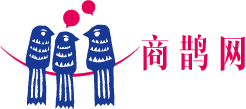Artemis 2 astronauts will double as human science experiments on their trip around the moon
阿尔忒弥斯 2 号宇航员在环月之旅中还将兼任 “人体科学实验对象”
Artemis 2 astronauts will be studied for how sleep, stress and radiation shape human health in deep space during their moon mission next year.
阿尔忒弥斯 2 号宇航员明年执行探月任务期间,将接受针对 “睡眠、压力及辐射如何影响深空环境下人体健康” 的研究
The second installment of NASA's Artemis program to return to the moon and establish a sustained human presence in deep space is set to be the first crewed flight test of its Orion spacecraft and Space Launch System (SLS) rocket. The four-person crew is tasked with putting the vessel through its paces in the cislunar environment, and performing several science experiments during their mission.
美国国家航空航天局(NASA)阿尔忒弥斯计划旨在实现重返月球并在深空建立持续人类存在,其第二阶段任务将成为 “猎户座” 飞船与太空发射系统(SLS)火箭的首次载人飞行测试。此次任务的四人机组将负责在地月空间环境中全面检验该航天器的性能,并在任务期间开展多项科学实验。
Some of that research involves the astronauts themselves, who will turn into a quartet of biomedical subjects to help NASA gather in-flight data on the human body beyond low Earth orbit for the first time in more than 50 years. As they have with hundreds of physiological tests conducted aboard the International Space Station (ISS), NASA will add the research to its growing understanding of the biological repercussions of life in microgravity, according to a recent release.
其中部分研究需宇航员亲身参与:他们将组成四人 “生物医学实验对象小组”,助力美国国家航空航天局(NASA)在 50 余年来首次收集 “低地球轨道以外” 太空飞行中的人体数据。NASA 在近期一份公告中表示,如同在国际空间站(ISS)上开展过的数百项生理测试那样,此次研究也将纳入其数据库,进一步完善对 “微重力环境下生命所受生物影响” 的认知
One of the experiments the Artemis 2 astronauts will undertake will see them join a long-running NASA effort to build a comprehensive understanding of how spaceflight affects human health. Samples of blood, urine and saliva are being collected in the months before launch, and the astronauts will undergo regular checks during their 10-day mission and follow-ups after their return.
阿尔忒弥斯 2 号宇航员将开展的实验中,有一项会让他们参与 NASA 的一项长期研究 —— 该研究旨在全面了解太空飞行对人体健康的影响。在发射前的数月里,研究人员会收集宇航员的血液、尿液和唾液样本;在为期 10 天的任务期间,宇航员将接受定期检查;返回地球后,还需进行后续跟踪监测。
NASA hopes to use the samples to track changes in cardiovascular health, nutrition, immunity and stress across multiple stages of training, flight and recovery.
美国国家航空航天局(NASA)希望借助这些样本,追踪宇航员在训练、飞行及恢复等多个阶段中,其心血管健康、营养状况、免疫功能和压力水平的变化情况
The Artemis Research for Crew Health and Readiness (ARCHeR) project will investigate how crew performance might be affected by time spent as such a far distance from Earth while inside Orion's confined space, combined with the astronauts' demanding schedule.
阿尔忒弥斯机组健康与准备状态研究(ARCHeR)项目将探究:宇航员在 “猎户座” 飞船密闭空间内、身处远离地球的环境中,再叠加高强度任务日程,这些因素会如何影响其执行任务的能力。
Each Artemis 2 astronaut will wear wrist sensors to log movement and sleep throughout the mission. Pre- and post-mission evaluations will be compared to in-flight data to better understand how the deep space mission influences the crew's alertness, stress and ability to work together cohesively.
每位阿尔忒弥斯 2 号宇航员将在任务期间佩戴腕部传感器,记录自身的活动情况与睡眠状态。研究人员会将任务前、任务后的评估数据,与任务期间收集到的飞行数据进行对比,以更深入地了解深空任务如何影响机组人员的警觉性、压力水平及团队协作能力。
Samples provided by the crew before, during and after their mission will also be used to study their immune systems. In this case, immune system markers in their saliva samples will help researchers evaluate how the body reacts to space radiation.
机组人员在任务前、任务期间及任务后提供的样本,还将用于研究他们的免疫系统。具体而言,其唾液样本中的免疫系统标志物,将帮助研究人员评估人体对太空辐射的反应。。
To save space and power aboard Orion during their mission, the crew is foregoing refrigeration of their in-flight saliva samples, and will instead make their deposits on specially designed dab papers, which will absorb the samples for simpler storage. Once they return, scientists will test the papers for dormant viruses triggered by the microgravity environment — a phenomenon seen aboard the ISS, where stress has been documented as a trigger to reactivate illnesses like chickenpox and shingles.
为节省 “猎户座” 飞船在任务期间的空间与电力,机组人员将不会对飞行过程中采集的唾液样本进行冷藏,而是将样本滴在特制的吸附纸上 —— 这种纸张可吸收样本,便于更简便地储存。一旦宇航员返回地球,科学家将检测这些吸附纸上是否存在因微重力环境而被激活的潜伏病毒;这种现象此前已在国际空间站(ISS)被观察到 —— 在空间站环境中,有记录显示压力会成为激活水痘、带状疱疹等疾病的诱因。
Artemis 2 astronauts will also be accompanied by thumb-sized "avatars" of themselves, in the form of blood samples grown to simulate bone marrow on organ-on-a-chip devices.
阿尔忒弥斯 2 号(Artemis 2)的宇航员还将携带与自身匹配的拇指大小 “替身”—— 这些 “替身” 是利用宇航员血液样本培养而成的物质,在器官芯片设备上模拟出骨髓组织。
These chips will ride inside Orion as it passes through the Van Allen belts — zones of charged particles between the Earth and moon — testing how marrow responds to deep space radiation and microgravity. Results will be compared to ISS experiments to see if the chip technology can accurately predict how tissues react outside Earth's radiation-hardened magnetosphere.
在 “猎户座” 飞船穿越范艾伦辐射带(地球与月球之间的带电粒子区域)时,这些芯片将随船搭载,用于测试骨髓组织对深空辐射和微重力环境的反应。研究人员会将此次实验结果与国际空间站(ISS)的实验数据进行对比,以验证该器官芯片技术能否准确预测人体组织在地球抗辐射磁层之外的反应。
During Artemis 1, Orion carried 5,600 passive and 34 active radiation sensors. For Artemis 2, the spacecraft has been reduced to a modest six active sensors inside the cabin. Additionally, astronauts will wear personal dosimeters.
在阿尔忒弥斯 1 号任务期间,“猎户座” 飞船搭载了 5600 个被动式辐射传感器和 34 个主动式辐射传感器。而到了阿尔忒弥斯 2 号任务,飞船舱内的主动式辐射传感器数量已精简至不多的 6 个。此外,宇航员还将佩戴个人剂量计。关键术语与设备解析
The devices will measure the consistent radiation exposure experienced throughout the mission, and detect sudden spikes from things like solar storms. If readings reach dangerous levels, astronauts can construct a makeshift radiation shield inside Orion, fortifying themselves between the spacecraft's heatshield and water storage canisters, both of which are better at absorbing penetrating radiation than other onboard materials.
这些设备将用于监测整个任务期间宇航员持续遭受的辐射暴露情况,并探测太阳风暴等事件引发的突发性辐射峰值。若辐射读数达到危险水平,宇航员可在 “猎户座” 飞船内搭建临时辐射防护屏障 —— 他们会躲在飞船的防热盾与储水罐之间,这两种装置对穿透性辐射的吸收能力均优于飞船上的其他材料,能为宇航员提供更强的防护。
NASA has selected Reid Wiseman, Victor Glover, and Christina Koch, and CSA (Canadian Space Agency) astronaut Jeremy Hansen as the crew for the Artemis 2 mission. They are scheduled to launch no earlier than Feb. 2026, with a launch window that extends through April.
美国国家航空航天局(NASA)已确定阿尔忒弥斯 2 号(Artemis 2)载人绕月任务的四名机组成员,分别为 NASA 宇航员里德・怀斯曼(Reid Wiseman)、维克多・格洛弗(Victor Glover)、克里斯蒂娜・科赫(Christina Koch),以及加拿大航天局(CSA)宇航员杰里米・汉森(Jeremy Hansen)。任务计划不早于 2026 年 2 月发射,发射窗口将持续至 4 月。



